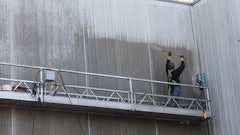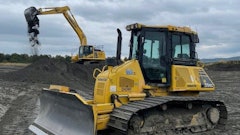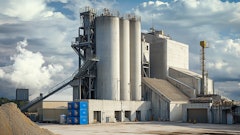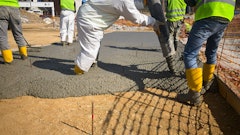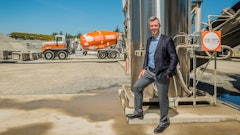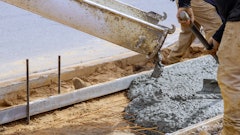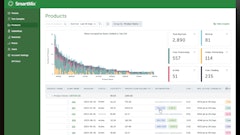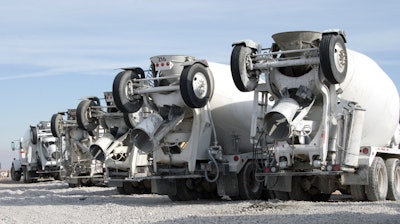
Although green cement was invented in the late ‘90s, it hadn’t managed to gain much traction. Over the last few years, however, you may have heard the term “green cement” gaining ground as a method of reducing carbon emissions associated with cement manufacturing. The concrete industry accounts for roughly seven percent of CO2 emissions globally. Global Efficiency Intelligence reports that during the concrete production process, cement is responsible for more than 80 percent of CO2 emissions through calcination and fuel combustion.
To combat this, world leaders at the 26th-annual United Nations Climate Change Conference created the Breakthrough Agenda aimed at supporting clean technology processes, including power, road transport, steel, buildings, cement, and concrete, among other things. This agenda could amplify the use of green cement throughout the construction industry.
What is Green Cement?
At the most basic level, green cement is made using waste or renewable materials and is manufactured in an eco-friendly way. While green cement has the potential to cut emissions, there can be drawbacks when trying to incorporate its use into your business model. Not only is price and availability a barrier but as with anything new, it can also have a steep learning curve in practical use.
With the green cement market projected to grow from just over $39 billion in 2024 to roughly $83 billion by 2032, let’s take a look at a few different kinds of green cement, including the pros and cons.
- Magnesium oxychloride cement: Magnesium oxychloride cement is an air-hardening gel material made from light-burnt magnesium oxide, magnesium chloride, and water. Magnesium oxychloride cement has such benefits as strength, fast setting speed compared to other green cements, thermal insulation, and fire resistance. On the other hand, poor water resistance has led to limited development.
- Ferrocement: Ferrocement is made by mixing silica and iron and can be used as a precast unit or panel, making it relatively easy to transport. A downside of this type of green cement is that it can be difficult to work with and labor-intensive, so it may not be suitable in high labor-cost areas.
- Geopolymer cement: Also known as alkali-activated cement, this green option is manufactured using aluminosilicates. While alkali-activated slag cement is a type of geopolymer that has been in use since the mid-20th century, it’s still not quite widely available and is only recently being looked at in the U.S. The benefits of geopolymer cement depend on the composition and proportions of its components. This cement provides such benefits as insulation and water durability with higher early strength, but it can become brittle over time and is prone to shrinkage.
- Calcium sulfoaluminate cement: Calcium sulfoaluminate cement is a mixture of limestone, fly ash, and gypsum, and is lauded for its strength, rapid setting times, and low shrinkage rates, as well as its resistance to sulfate, which makes it ideal for use in coastal areas. One of the most widely used types of green cement, it does carry a few drawbacks, including a short setting time, which can be challenging in colder weather. It also causes some challenges with workability, which can lead to difficulties for construction workers.
 Construction fleets can use a fleet optimization platform to improve preventive maintenance compliance, making it easy to plan downtime effectively.Fleetio
Construction fleets can use a fleet optimization platform to improve preventive maintenance compliance, making it easy to plan downtime effectively.Fleetio
Pricing Forecast
Like many newer green building materials, price can pose a barrier for entry, with costs varying by region and availability. And while the push toward going net-zero in the cement industry may result in a 40 to 120-percent increase in cement costs, it may not be quite as bad as one might think. Overall, the components of green cement are relatively cheap, though the manufacturing process may serve to drive up the price. Currently, the national average cost of conventional cement is about $125 per ton. Contrast that with the price of green cements in California and Texas, spanning from $100-$160 per ton and $80-$120 per ton, respectively, according to IndexBox, which indicates some areas may feel the price difference more than others.
The U.S. General Services Administration recently ran a national survey of more than 130 businesses, 55 percent of which expressed that their green and conventional cement products were close to price parity, though a supplier in Massachusetts acknowledged a small cost premium for green cement—about $2-$20 per cubic yard depending on the mix. There is an expected reduction of price premiums for green cements as both availability and local supply increase, though, seeing as regions like the western U.S—where green cement is the norm—can procure it at a less than one-percent price premium.
Budgeting for Green Materials
Until green cement is more widely available in more areas of the country, it’s important to keep the projected price differences top of mind. Making room in the budget is key to addressing this issue and, because a construction business’s fleet makes up a hefty portion of expenses, getting a handle on fleet costs can help provide the budgetary flexibility needed to offset any higher material costs. Getting control of fleet expenses is easier said than done, especially for fleets using manual methods of data collection, like paper or spreadsheets. Because service and fuel spend make up the brunt of a fleet’s expenses, those are key areas to target to improve cost control.
 Fleets can take advantage of fuel management within these platforms, cutting down on fuel misuse and even theft.FleetioEnsuring preventive—and proactive—maintenance is done in a timely manner can greatly decrease asset downtime and repairs while maximizing the lifecycle of vehicles and equipment. Construction fleets can use a fleet optimization platform to improve preventive maintenance compliance through service reminder alerts, making it easy to plan downtime effectively. Digital inspections in these types of platforms automatically alert management when an inspection item fails, allowing for issue severity prioritization so critical issues can be addressed expediently.
Fleets can take advantage of fuel management within these platforms, cutting down on fuel misuse and even theft.FleetioEnsuring preventive—and proactive—maintenance is done in a timely manner can greatly decrease asset downtime and repairs while maximizing the lifecycle of vehicles and equipment. Construction fleets can use a fleet optimization platform to improve preventive maintenance compliance through service reminder alerts, making it easy to plan downtime effectively. Digital inspections in these types of platforms automatically alert management when an inspection item fails, allowing for issue severity prioritization so critical issues can be addressed expediently.
Fleets can take advantage of fuel management within these platforms as well, with automatic alerts around fuel exceptions and discrepancies, cutting down on fuel misuse and even theft. Fuel consumption trends can also be easily tracked to see high-cost assets that may need to be replaced. When integrating telematics with an optimization platform, you can monitor true versus operational idle time as well, which can help reduce unnecessary wear and tear and fuel consumption.
While green cement may not be as high an upfront cost as something like an electric vehicle or piece of equipment, depending on where you’re operating, it may still pose a monetary procurement challenge. Making room in your budget can help offset higher upfront costs, allowing you to be an early adopter of green cement to help meet sustainability goals and appeal to carbon-conscious clients.


![Euco Tilt Image 3 66ab8bd04bf5c[1]](https://img.forconstructionpros.com/files/base/acbm/fcp/image/2025/01/EucoTilt_Image__3_.66ab8bd04bf5c_1_.677d478b85bce.png?auto=format%2Ccompress&fit=crop&h=100&q=70&rect=0%2C0%2C1920%2C1077&w=100)


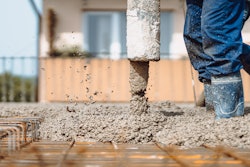

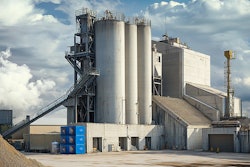

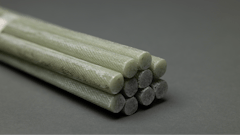

![Euco Tilt Image 3 66ab8bd04bf5c[1]](https://img.forconstructionpros.com/files/base/acbm/fcp/image/2025/01/EucoTilt_Image__3_.66ab8bd04bf5c_1_.677d478b85bce.png?ar=16%3A9&auto=format%2Ccompress&fit=crop&h=135&q=70&rect=0%2C0%2C1920%2C1077&w=240)
